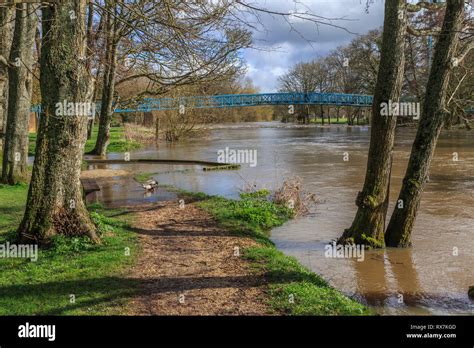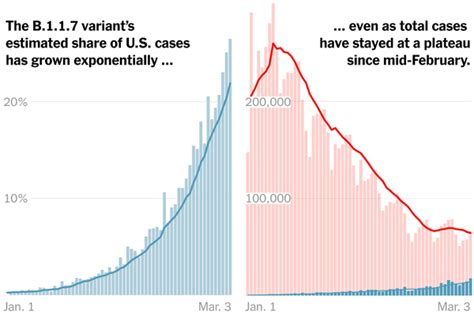
The picturesque town of Ellicott City, Maryland, is grappling with a severe decline in summer tourism following a devastating flood that ripped through its historic Main Street, leaving business owners struggling to recover and casting a shadow over the town’s economic future.
Ellicott City, a Howard County gem known for its antique shops, boutiques, and historic architecture, is facing an uphill battle to restore its reputation as a vibrant tourist destination after the deluge. The flood, which occurred on May 27, 2023, was the latest in a series of catastrophic weather events to plague the town, prompting concerns about its long-term viability and the effectiveness of ongoing mitigation efforts. “We are open, but people think we aren’t,” said Kate Marks, owner of a Main Street boutique, reflecting the sentiment of many local merchants. “It’s been really, really slow.”
The recent flood compounded the damage caused by previous disasters in 2016 and 2018, leaving many businesses shuttered and residents wary. Although the town has undertaken extensive reconstruction projects, the perception of risk and the lingering physical scars have deterred visitors, resulting in a significant drop in revenue for local businesses. “We’re trying to get the message out that we’re still here and we’re still open,” stated Howard County Executive Calvin Ball during a recent town hall meeting. “But it’s tough when people see the damage and are afraid to come back.”
The decline in tourism has had a cascading effect on the local economy. Restaurants, which typically thrive during the summer months, are reporting drastically reduced patronage. Retail shops are struggling to move inventory, and hotels are experiencing low occupancy rates. The impact is particularly acute for small, family-owned businesses that rely on seasonal income to sustain them throughout the year.
The local government is attempting to mitigate the economic fallout by implementing various initiatives to promote tourism and support local businesses. These include marketing campaigns highlighting the town’s resilience and unique attractions, financial assistance programs for businesses impacted by the flood, and community events designed to draw visitors back to Main Street.
However, many business owners argue that these efforts are insufficient to address the scale of the problem. They contend that more aggressive measures are needed to restore confidence in the town’s safety and to attract a critical mass of tourists. Some have called for additional infrastructure improvements, such as enhanced flood control systems and improved drainage, to protect against future disasters. Others have suggested offering incentives to encourage businesses to remain in Ellicott City and to attract new investment.
“We need more than just marketing slogans,” asserted John Smith, the owner of a long-standing Main Street restaurant. “We need concrete action that demonstrates that the town is serious about protecting its businesses and residents. People need to feel safe and secure before they’re going to come back and spend their money here.”
The challenges facing Ellicott City are not unique. Many small towns and historic districts across the country are grappling with the impacts of climate change and extreme weather events. As these communities become increasingly vulnerable to floods, wildfires, and other natural disasters, they face difficult decisions about how to adapt and rebuild.
For Ellicott City, the path forward is uncertain. The town’s future hinges on its ability to overcome the lingering effects of the recent flood, restore its reputation as a safe and attractive tourist destination, and implement effective strategies to mitigate the risk of future disasters. The recovery process will require a concerted effort from local government, business owners, residents, and the broader community to ensure that this quaint town can once again thrive.
The May 2023 Flood: A Detailed Account
The flood that struck Ellicott City on May 27, 2023, was triggered by a sudden and intense rainstorm that overwhelmed the town’s drainage systems. According to the National Weather Service, approximately eight inches of rain fell within a two-hour period, causing the Patapsco River and its tributaries to swell rapidly. The resulting floodwaters surged through Main Street, inundating businesses, damaging infrastructure, and displacing residents.
The speed and intensity of the flood caught many people by surprise. Business owners scrambled to protect their merchandise and equipment, while residents sought refuge in upper floors or higher ground. The floodwaters carried debris, including vehicles, trees, and building materials, which further exacerbated the damage.
Emergency responders from Howard County and surrounding jurisdictions quickly mobilized to assist with rescue and recovery efforts. Firefighters used boats to rescue people trapped in flooded buildings, while police officers cordoned off the affected areas to prevent further injuries. The American Red Cross established shelters for displaced residents, providing food, water, and other essential supplies.
The aftermath of the flood revealed the extent of the devastation. Many businesses were completely destroyed, their contents swept away by the raging waters. Buildings were structurally damaged, foundations were undermined, and roads were impassable. The town’s historic Main Street was transformed into a muddy wasteland.
Economic Impact: By the Numbers
The economic impact of the May 2023 flood on Ellicott City has been significant and far-reaching. According to estimates from the Howard County Economic Development Authority, the flood caused tens of millions of dollars in damage to businesses and infrastructure.
A preliminary survey of Main Street businesses found that more than 80% of respondents reported experiencing significant losses due to the flood. Many businesses were forced to close temporarily, while others were unable to reopen at all. The survey also revealed that the flood had resulted in widespread job losses, as businesses were forced to lay off employees due to reduced revenue.
The decline in tourism has further compounded the economic problems facing Ellicott City. Hotel occupancy rates have plummeted, restaurant sales have declined sharply, and retail shops are struggling to stay afloat. The loss of tourism revenue has had a ripple effect throughout the local economy, impacting other businesses that rely on tourism-related spending.
The Howard County government has established a disaster relief fund to provide financial assistance to businesses and residents affected by the flood. The fund has provided grants and loans to help businesses rebuild and recover, and it has also provided assistance to residents who have lost their homes or possessions. However, many business owners argue that the assistance is not enough to fully compensate for their losses.
The Psychological Toll: A Community in Distress
In addition to the economic impact, the May 2023 flood has taken a significant psychological toll on the Ellicott City community. Many residents and business owners are still traumatized by the experience, and they are struggling to cope with the emotional and mental health challenges that have arisen in the aftermath of the disaster.
The repeated flooding events in Ellicott City have created a sense of anxiety and uncertainty among residents. Many people are worried about the possibility of future floods, and they are hesitant to invest in their homes or businesses. The uncertainty has also made it difficult for the community to move forward and rebuild.
Mental health professionals have reported an increase in the number of people seeking counseling and support services in Ellicott City since the flood. Many people are experiencing symptoms of post-traumatic stress disorder (PTSD), including flashbacks, nightmares, and anxiety. Others are struggling with depression, grief, and loss.
The Howard County government has partnered with local mental health organizations to provide counseling and support services to residents affected by the flood. These services include individual therapy, group therapy, and community outreach programs. The goal is to help people cope with the emotional and mental health challenges they are facing and to build resilience in the community.
Mitigation Efforts: A Race Against the Waters
In the wake of the repeated flooding events in Ellicott City, the Howard County government has undertaken a series of mitigation projects aimed at reducing the risk of future disasters. These projects include:
- The Ellicott City Safe and Sound Plan: A comprehensive plan to mitigate flood risk in Ellicott City, including stormwater management projects, building demolition, and stream restoration.
- The Tunnel Project: A large-scale project to construct a tunnel under Main Street to divert floodwaters away from the town center.
- Stream Restoration Projects: Projects to restore and enhance the natural function of streams and waterways in the Ellicott City area.
- Building Demolition: The demolition of buildings in high-risk areas to create more space for floodwaters to flow.
- Stormwater Management Projects: Projects to improve stormwater management practices in the Ellicott City area, including the construction of retention ponds and rain gardens.
These mitigation efforts are designed to reduce the risk of future flooding and to protect the town’s businesses and residents. However, some residents and business owners have expressed concerns about the effectiveness of these projects, arguing that they are not sufficient to address the scale of the problem. They have called for more aggressive measures, such as the construction of a larger tunnel or the relocation of businesses from high-risk areas.
“We appreciate the efforts that the county is making, but we need to be realistic about what these projects can achieve,” said Sarah Johnson, a Main Street business owner. “We need to consider all options, including the possibility of relocating businesses from the most vulnerable areas.”
A Community Divided: Differing Perspectives on the Future
The repeated flooding events in Ellicott City have created divisions within the community about the town’s future. Some residents and business owners believe that the town can be rebuilt and restored to its former glory, while others are more pessimistic about its long-term viability.
Those who are optimistic about the future point to the town’s resilience and its rich history. They argue that Ellicott City is a special place that is worth fighting for, and they believe that the community can overcome the challenges it faces. They support the ongoing mitigation efforts and believe that they will eventually reduce the risk of future flooding.
“Ellicott City is a strong and resilient community,” said Mayor Tom Butler. “We have faced many challenges in the past, and we have always come back stronger. I am confident that we will do so again.”
Those who are more pessimistic about the future argue that the risk of future flooding is too great to ignore. They believe that the town is simply too vulnerable to extreme weather events, and that it is not realistic to expect that mitigation efforts will be completely effective. They support more drastic measures, such as the relocation of businesses from high-risk areas.
“We need to be honest with ourselves about the risks that we face,” said David Wilson, a Main Street resident. “Ellicott City is a beautiful town, but it is also a dangerous place to live and work. We need to consider all options, including the possibility of moving to a safer location.”
The differing perspectives on the future have created tensions within the community. Some residents and business owners feel that their concerns are not being heard by the local government, while others feel that the government is doing everything it can to help. These tensions have made it difficult to build consensus around a shared vision for the future.
Looking Ahead: Charting a New Course
The future of Ellicott City is uncertain, but one thing is clear: the town must adapt to the challenges it faces. The repeated flooding events have demonstrated the need for a new approach to development and risk management.
The Howard County government is working to develop a long-term plan for Ellicott City that takes into account the risks of future flooding. This plan will likely include a combination of mitigation efforts, building codes, and land use regulations. The goal is to create a more resilient and sustainable community that can withstand future disasters.
The plan will also need to address the economic challenges facing Ellicott City. The decline in tourism has had a devastating impact on the local economy, and the town needs to find new ways to attract visitors and support local businesses. This could involve developing new attractions, promoting the town’s history and culture, and creating a more welcoming environment for visitors.
“We need to reimagine Ellicott City as a place that is both resilient and vibrant,” said County Executive Calvin Ball. “We need to create a community that is safe, sustainable, and economically prosperous.”
The recovery of Ellicott City will be a long and difficult process, but it is a process that is worth undertaking. The town is a valuable asset to Howard County and the state of Maryland, and it is important to preserve its history, culture, and community. By working together, the residents, business owners, and government officials of Ellicott City can create a brighter future for the town.
The Role of Climate Change
While local factors certainly contributed to the severity of the flooding in Ellicott City, the broader context of climate change cannot be ignored. Scientists have warned for years that a warming planet will lead to more frequent and intense extreme weather events, including heavy rainfall and flooding.
The atmosphere can hold more moisture as temperatures rise, leading to heavier downpours when storms occur. Changes in atmospheric circulation patterns can also contribute to increased rainfall in certain regions. The Ellicott City floods are consistent with the trends predicted by climate scientists, raising concerns about the vulnerability of communities to climate-related disasters.
Addressing climate change will require a global effort to reduce greenhouse gas emissions and transition to a cleaner energy economy. However, local communities can also take steps to adapt to the impacts of climate change, such as by improving stormwater management systems, strengthening infrastructure, and developing emergency preparedness plans.
Lessons Learned: A Model for Resilience
The experiences of Ellicott City offer valuable lessons for other communities facing similar challenges. The town’s repeated flooding events have highlighted the importance of proactive risk management, community resilience, and long-term planning.
Other communities can learn from Ellicott City’s efforts to mitigate flood risk, such as by investing in stormwater management infrastructure, implementing stricter building codes, and developing emergency preparedness plans. They can also learn from the town’s efforts to support local businesses and residents in the aftermath of a disaster, such as by providing financial assistance, counseling services, and community outreach programs.
Ultimately, the recovery of Ellicott City will depend on the strength and resilience of its community. By working together, the residents, business owners, and government officials of Ellicott City can overcome the challenges they face and create a brighter future for the town. The town’s story can serve as an inspiration to other communities facing similar challenges, demonstrating that it is possible to rebuild and recover from even the most devastating disasters.
The Path to Recovery: A Call to Action
The road to recovery for Ellicott City is long and arduous, but it is not insurmountable. The town’s resilience, coupled with strategic planning and community support, can pave the way for a brighter future. To ensure a successful recovery, several key actions are necessary:
- Increased Funding for Mitigation Projects: Securing additional funding from federal, state, and local sources to accelerate the completion of critical mitigation projects, such as the tunnel project and stream restoration efforts.
- Business Support and Incentives: Implementing targeted programs to support existing businesses, attract new investments, and encourage entrepreneurship. This could include tax incentives, grants, and low-interest loans.
- Community Engagement and Collaboration: Fostering open communication and collaboration among residents, business owners, and government officials to ensure that recovery efforts are aligned with the community’s needs and priorities.
- Tourism Promotion and Marketing: Launching a comprehensive marketing campaign to highlight Ellicott City’s unique attractions and promote its resilience as a tourist destination. This could include showcasing the town’s history, culture, and natural beauty.
- Mental Health and Wellness Support: Expanding access to mental health services and support programs to help residents cope with the trauma and stress associated with the flooding events.
- Long-Term Planning and Sustainability: Developing a long-term plan for Ellicott City that addresses the challenges of climate change and promotes sustainable development practices. This could include incorporating green infrastructure, promoting energy efficiency, and reducing greenhouse gas emissions.
- Emergency Preparedness and Response: Enhancing emergency preparedness plans and response capabilities to ensure that the community is prepared for future disasters. This could include improving communication systems, conducting regular drills, and establishing evacuation routes.
By taking these actions, Ellicott City can not only recover from the recent flood but also build a stronger, more resilient, and more sustainable future for itself. The town’s story can serve as a testament to the power of community, resilience, and determination in the face of adversity.
FAQ: Ellicott City Flood Recovery
-
What caused the recent flooding in Ellicott City? The flood on May 27, 2023, was caused by an intense rainstorm that dropped approximately eight inches of rain in a two-hour period, overwhelming the town’s drainage systems and causing the Patapsco River and its tributaries to flood Main Street.
-
What is the economic impact of the flood on Ellicott City? The flood caused tens of millions of dollars in damage to businesses and infrastructure. Many businesses have been forced to close temporarily or permanently, leading to job losses and a significant decline in tourism revenue.
-
What mitigation efforts are being undertaken to prevent future flooding? Howard County is implementing the Ellicott City Safe and Sound Plan, which includes stormwater management projects, building demolition, stream restoration, and the construction of a tunnel to divert floodwaters.
-
How are local businesses being supported during the recovery process? The Howard County government has established a disaster relief fund to provide financial assistance to businesses affected by the flood. This fund offers grants and loans to help businesses rebuild and recover. Also, marketing campaigns are implemented to promote the town’s resilience and unique attractions.
-
What mental health resources are available for residents affected by the flood? The Howard County government has partnered with local mental health organizations to provide counseling and support services, including individual therapy, group therapy, and community outreach programs, to help residents cope with the emotional and mental health challenges they are facing.









